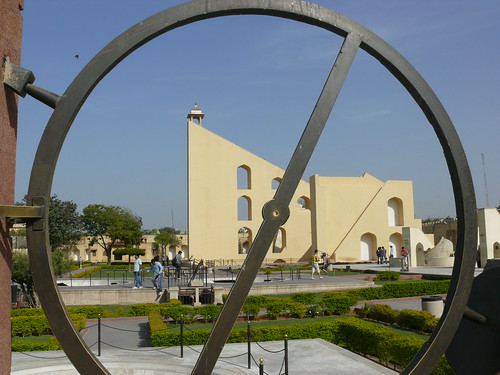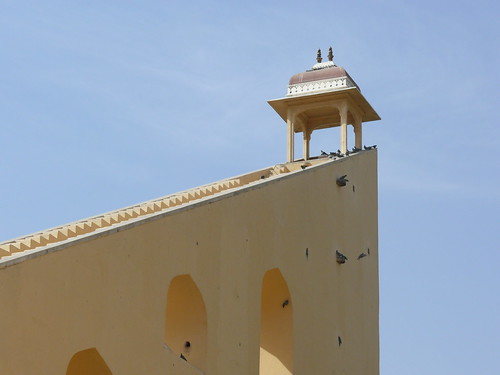"Oh, wow...." That was the only thought going through my head as I tried to keep my jaw from dropping down. We had just walked into Jantar Mantar, an observatory which was built between 1727 and 1734. My eyes skipped from structure to structure, absorbing the symmetry and geometry of constructions which made this such an accurate measuring tool. The name Jantar Mantar literally means calculation instrument, and the 14 large devices in this fairly small astronomical park are exactly that. There is the Vrihat Samrat Yantra, the giant sundial which proudly rises above everything else. If its sheer size and smooth lines aren't enough to impress you, how about the fact that it is accurate to 2 seconds, still accurate to this day. Just off to one side is a set of 12 similar structures. The zodiac gnomes are individually calibrated to be accurate depending on which zodiac sign is in the sky. There is the Narivalaya Yantra, a large double faced sundial. The hemisphere impressions in the ground form the Jai Praksh Yantra which shows a star's position. Other instruments' uses escaped my notice as I was drawn to the careful construction, precise rulers etched into the edges, or the sweeping lines. The large astrolabe was intriguing, especially when I realized that I could sight some of the other instruments through it if I got low enough. Okay, not exactly what it is supposed to be used for (rather a precise measurement of the degree a star has risen and its east-west inclination). I'm sure I missed out on understanding a lot about what these fantastic tools could do; regardless Jantar Mantar was my favorite stop in Jaipur.
If you want to learn a bit more about how some of the instruments work this is the best site I found.
If you want to learn a bit more about how some of the instruments work this is the best site I found.


No comments:
Post a Comment